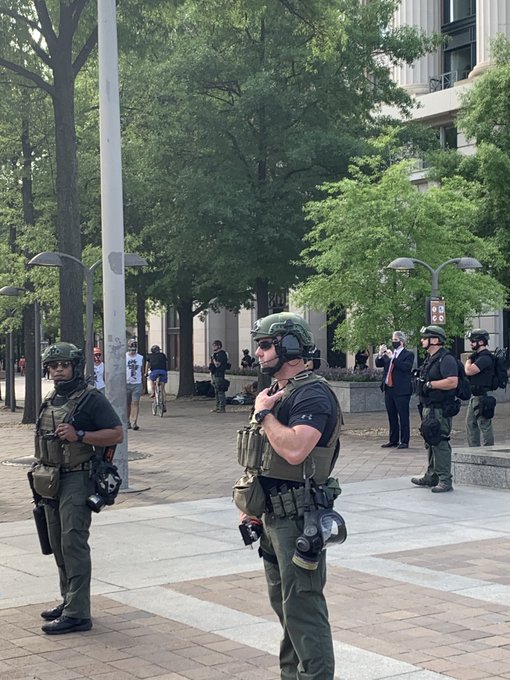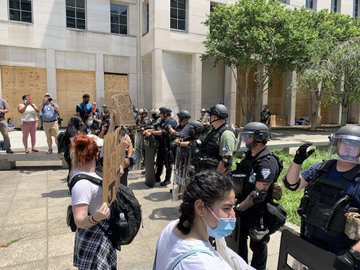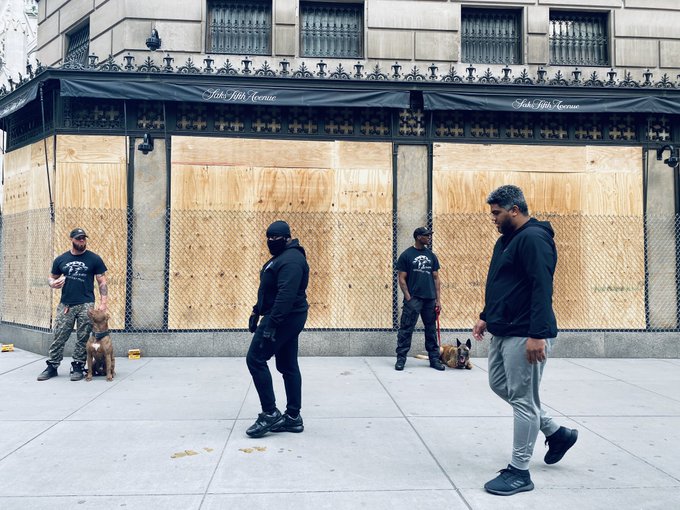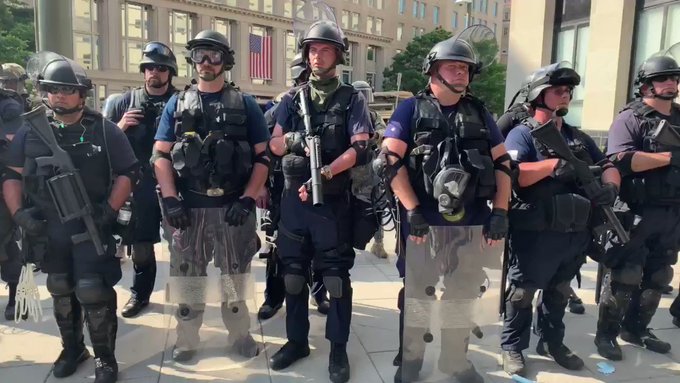Transcript
00:00
well how do you their internet people
00:02
it’s Bo again if you know me you’re
00:05
already laughing waiting for the story
00:09
if you don’t know me you need to know I
00:12
used to train law enforcement one day I
00:15
was given a class and had a cop asked
00:18
about hitting a suspect in the knee with
00:20
a baton saying that it was probably more
00:23
effective I explained you know you’ve
00:26
got legal tactical of medical liability
00:28
the legal and medical liability on that
00:30
is gonna eat you alive you don’t want to
00:33
do anything that could be permanently
00:35
disabling like hit a joint unless your
00:38
wife is truly in danger and he says well
we write the report if you don’t know
what that phrase means it means that the
cops can pretty much say whatever they
want and the police report and it will
be believed even if they are lying it
00:56
bothered me that he said it it bothered
00:59
me more that I got a room full of cops
01:01
and nobody said anything against it and
01:05
in fact most of them laughed I never
01:08
taught another class for law enforcement
01:10
again that was 12 years ago in that time
01:16
I have had a number of officers ask me
01:19
for training and they normally get
01:21
pretty colorful responses this is a
01:26
little bit different cop watch that
01:29
police militarization video and he I
01:33
don’t want to put his details out there
01:35
he he’s been a cop for more than five in
01:38
less than ten years he said he’d never
01:40
heard the phrase time distance and cover
01:42
and I guess in the comment section I
01:44
talked about auditory exclusion he’d
01:47
never heard of that either he googled it
01:49
and said that now he feels a little bad
01:52
now what that means is that over the
01:56
course of his career he has treated
01:57
someone more roughly than he should have
01:59
simply because he did not know he ends
02:04
his
02:05
is this message by saying Bo you’re
02:08
wrong
02:08
we do need militarized training just not
02:12
the kind we’re getting
Let’s talk about 3 letters that can make rural whites understand the fear minorities have of cops.
Check out the TFC store. Be sure to click on the heart icon on each design’s page to see where money is being donated. Each design has shirts, mugs, stickers, etc available.
Joe Biden NEEDS To Hear This Message From Jamaal Bowman on Rahm Emanuel
“Late last week, after CNN’s Jeff Zeleny reported that former Chicago Mayor Rahm Emanuel was under consideration to be Transportation secretary in the Biden administration, liberals quickly made clear how much they hated the idea.
“Rahm Emanuel covered up the murder of a Black teenager, Laquan McDonald, while he was Mayor of Chicago,” tweeted New York Rep.-elect Mondaire Jones. “That he’s being considered for a cabinet position is completely outrageous and, honestly, very hurtful.”*
A dangerous new factor in an uneasy moment: Unidentified law enforcement officers
But it wasn’t only components of the Defense Department that had been brought to the nation’s capital to help with the “domination” that President Trump sought to display in the wake of the turmoil. Washington residents have also been confronted with a number of other heavily armed law enforcement officers who share an unexpected characteristic: Neither their affiliation nor their personal identities are discernible.
On Tuesday, Mother Jones reporter Dan Friedan encountered these individuals, who gave no more specific identification than that they were associated with the Justice Department.
Asked who they’re with, these guys say only that they’re with “The Department of Justice.”
27.3K people are talking about thisNear the White House on Wednesday, MSNBC’s Garrett Haake had a similar encounter.
Back outside the White House. Today the perimeter has been pushed back another half block. Federal law enforcement of some kind, but they won’t identify themselves, and all insignias and name plates have been removed.
21.6K people are talking about thisSo did the New Republic’s Matt Ford. When he asked the armed men if they were associated with the Bureau of Prisons based on an acronym on their uniforms, Ford was simply told, “Maybe.”
As it turns out, each of these encounters was apparently with elements of the Bureau of Prisons, called to the region by Attorney General William P. Barr this week. Friedman confirmed with BOP that the men he encountered were with the agency; Haake’s Twitter followers picked out BOP insignia on their clothing.
“The idea that the federal government is putting law enforcement personnel on the line without appropriate designation of agency, name, etc. — that’s a direct contradiction of the oversight that they’ve been providing for many years to local police and demanding in all of their various monitorships and accreditation,” former New York City police commissioner William Bratton said in a phone interview with The Washington Post on Wednesday.
The prospect of government agencies involved in policing the city seeking to obscure their identities, Bratton said, was “very concerning.”
The vagueness of their identity and their disinterest in identifying themselves introduce specific challenges and risks, as former Army officer and FBI special agent Clint Watts explained in a phone interview with The Post.
For one thing, Watts pointed out, a civilian might refuse to respond to an order from a law enforcement official who doesn’t identify themselves in that way.
“If I go out and I pull out a gun and I say, ‘Freeze,’ and they say why, I would have to say, ‘I’m an FBI agent’ or law enforcement officer or whatever,” he said, “because otherwise they would be totally in the right to defend themselves potentially.”
He imagined his own reaction if he was on the street in New York or Washington and an unidentified officer pushed him with a shield: His instinct would be to fight back.
The added danger, particularly given the influx of officials in the area, is that law enforcement officers wouldn’t recognize one another. Bratton noted that one reason for identifiers is that officers would be able to recognize one another. Riot helmets often have identifying numbers on their backs in part for that purpose.
Watts described an incident shortly after he began at the FBI when an undercover agent who’d drawn his weapon was killed by another bureau employee who confused him with the perpetrator. Introduce scores of officers without identification into a volatile scenario and it’s easy to see similar (if less deadly) mistakes being common.
Particularly given another component of the moment. It’s not uncommon for civilians to dress in paramilitary gear and show up at the protests, often doing so as self-appointed assistants to police and other law enforcement officials.
“You can have this weird thing where you have these militia group guys just dressed up in their gear, which they like to do anyway, show up and just start pushing protesters around,” Watts said. “And if you’re a protester, you don’t know if you have to respond to this person.”
Granting unidentifiable law enforcement officials the ability to engage with and confront protesters functionally allows any unidentifiable individual to more easily pretend to be law enforcement. It introduces an opportunity for those looking to take advantage of the situation to target protesters or to cause disruptions.
The problem extends further. Consider the security hired to defend Saks Fifth Avenue’s flagship store in Manhattan.
Saks Fifth Avenue hirer security guards with specially trained dogs to protect the premises tonight in wake of the looting at Macy’s.
134 people are talking about thisIt’s easy to envision a scenario in which protesters are confronted by other hired security and forced to determine in real time if they constitute an official arm of law enforcement or if they’re simply hired muscle. There are widely divergent ramifications for a protester’s potential responses to such confrontations, depending on who the other person is.
And there’s an overarching question here: Why? Why are these officers unwilling to identify themselves or their organization? There’s clearly some power dynamic at play, as demonstrated in the snide “maybe” Ford was offered. But it also inhibits accountability.
“If those officers engage in any type of misbehavior during the time that they are there representing the federal government, how are you to identify them?” Bratton said. “What is the need for anonymity in controlling crowd demonstrations?”
Such anonymity echoes the way in which enforcers in autocratic regimes have worked to avoid accountability. If you believe that you were unlawfully detained or assaulted by a law enforcement official, you can try to hold them to account. (Of course, the extent to which you’ll be able to do so is another question, one at the heart of the current protests.) But how do you hold someone accountable when you don’t know who they are or even who they work for?
Ruth Ben-Ghiat, a professor of history at New York University and an expert on authoritarianism, noted the lack of accountability introduced by the government of Chilean dictator Augusto Pinochet for the actions of loyalist forces.
“The government passed laws that allowed the service records of military men and police who had been involved in torture and abuses to be destroyed so that their records were swept clean,” she said. “Many authoritarian leaders issue amnesty that free service people, clean up their records so that their abuses are never known.”
The point isn’t necessarily that the lack of identification offered by the men in Washington is intended to facilitate abuse. It’s that it hampers accountability, intentionally or not, which itself makes abuse more likely to go unchecked. Officers of the law are accountable to the public, something that’s harder to achieve if you don’t know who they are.
What the current situation demands is clarity. Given the tension between law enforcement and the protesters and given the existence of those looking to amplify that tension either as cover for illegal looting or to commit vandalism against the state, it seems more important now than it normally is that the enforcement arm of the government be identified by agency and individually.
“The idea of having no identification whatsoever as to the agency that you belong to,” Bratton said, “is highly unusual and, from my perspective, not professional at all.”
Haake updated his assessment of the scene at the White House on Wednesday afternoon, reporting that the unidentified officers had been replaced by members of the National Guard, in uniforms including the D.C. flag.
But that didn’t last long.
5PM WHITE HOUSE — These are the unidentified DOJ officers holding the perimeter at 15th and H Streets.
They won’t tell the public to whom they report exactly…
It’s generating HUGE frustration here #GeorgeFloyd @WUSA9











